Hello and welcome!
I want to begin this week by sharing with you an opinion piece I authored that appeared in The Boston Globe on Monday. It addresses physician-assisted suicide, a very important moral issue, which is not a Catholic issue but a matter of the sacredness of life and defense of the weak.
It has been said that at the heart of the physician-assisted suicide debate is the moral-medical distinction between curing and caring for patients. The United States has an unmatched capacity for curing illness. But even here, there comes a moment when caring is the imperative because curing is no longer possible. Our collective responsibility is to address a person’s psychological, physical, and spiritual needs as they face the end of life or debilitating illness. To instead instigate death with physician-assisted suicide presents a moral and ethical threat to society, the medical profession, the disability community, and the common good.
Physician-assisted suicide is just that: suicide. And it is always tragic whether administered under a doctor’s care or self-inflicted. The Centers for Disease Control and Prevention report that suicide rates increased 36 percent between 2000 and 2021. In 2021, 1.7 million people attempted suicide in the United States. The CDC states that risk factors include a history of depression and other mental illnesses, impulsive behavior, isolation, and access to lethal means of suicide among people at risk.
The Massachusetts Legislature is considering a physician-assisted suicide bill, and they should reject it. Physician-assisted suicide could lead to a slippery slope of possibilities, like those already being witnessed in countries like the Netherlands, where 400 people suffering from mental illness were “euthanized” without their consent, as reported in 2017 by the Bioethics Observatory at the Catholic University of Valencia. Also consider the 28-year-old Dutch woman Zoraya ter Beek, from the Netherlands, who has decided to end her life next month because she has struggled with depression, autism, and borderline personality disorder. When we normalize physician-assisted suicide, we devalue life and remove any sense of hope.
Particularly vulnerable are people with disabilities. Debate in Canada has been intense. Dr. Mark S. Komrad of Johns Hopkins Hospital wrote in 2021 of a new assisted-suicide law in Canada, “This is a profound change in the trajectory of the euthanasia law, and the practice of psychiatry for Canada, which is now the largest nation that will soon allow MAID [medical aid-in-dying] for psychiatric conditions. It has rocked the professional mental health community in Canada, which fought to forestall the inclusion of psychiatric disorders for euthanasia.”
For 2,500 years, physicians throughout the world began their service with the Hippocratic Oath, promising not to harm and to “give no deadly medicine to anyone if asked nor suggest any such counsel.” This stands in direct opposition to physician-assisted suicide.
In my more than 54 years as a Catholic priest, I have anointed, prayed with, comforted, and stayed with many people during their last hours and minutes of life. Losing a loved one or watching someone suffer is always difficult, a process the hospice care and palliative care communities are dedicated to mitigating. Fear of tremendous pain and the loss of control are advanced as reasons to support physician-assisted suicide. In almost every instance, palliative care can suppress pain and provide a crucial level of support for patients and families.
In fact, the National Institute on Aging notes that “palliative care can be helpful at any stage of illness and is best provided soon after a person is diagnosed.”
Hospice was one of the first programs to use modern pain management techniques to care compassionately for the dying. In 2021, there were more than 5,000 hospice programs in the United States with an organized team approach to professional caregiving, and 1.5 million people are enrolled in hospice care each year. Furthermore, people already have the right to refuse burdensome, life-extending treatments. They also have the option of leaving advance directives to determine their care when they are no longer able to express their wishes. The death that results from withholding or withdrawing of life-sustaining treatment has always been separated by a bright line from active measures to cause death. Assisted suicide proponents seek to blur this line.
The assisted suicide bill in the Legislature has flaws, including:
— A diagnosis of death within six months, a requirement under the bill, is often wrong
As the late Dr. Barbara Rockett, a former president of the Massachusetts Medical Society, wrote, “One of the most difficult and often inadequate determinations that a physician has to make is the attempt to predict when a patient might die.” There are numerous examples of individuals across the country who have outlived that diagnosis and have lived for many years. They get to share the comfort, love, and companionship of family and friends and that wouldn’t have happened if they had opted for physician-assisted suicide. These individuals or their family members testify year after year before the Legislature about their personal journey and implore legislators to refrain from legalizing physician-assisted suicide.— The bill lacks sufficient safeguards to protect the most vulnerable
Individuals who are ill are often at the most vulnerable stage of their lives. In short, an individual who is physically disabled, depressed, or who fears being a burden to their family may be subject to undue influence or coercion by others to consume the deadly drug mixture. This is particularly troubling if there are financial benefits to be gained as a result.Physician-assisted suicide does not just contradict deeply held religious convictions but also violates principles held by many in the health care community, as evidenced by the stated positions of national health organizations as well as the disability community.
In June 2021, the National Hospice and Palliative Care Organization stated, “In light of the underuse of hospice and palliative care to alleviate suffering, lack of comprehensive health care with persons with serious illness, … concerns of disability rights advocates regarding protections from coercion, longstanding racial bias in medicine, disparities in health and medical care, and lack of protections to ensure voluntary participation, NHPCO opposes legally accelerated death.”
In January 2023, the Alzheimer’s Association severed its ties with Compassion and Choices, the chief proponents of physician-assisted suicide, stating, “Their values are inconsistent with those of the Association.”
Rather than legislating the acceleration of death, the Catholic Church encourages legislators to focus on providing quality palliative care to the sick and dying. Patients are best served when medical professionals, families, and loved ones provide support and care with dignity and respect.
As I mentioned in my previous post, last week, we were in the midst of our annual pilgrimage and meeting of The Papal Foundation in Rome. This is the largest pilgrimage we’ve had so far, with over 150 people joining us.
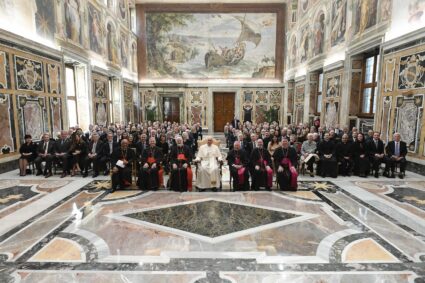
On Friday, we had our audience with the Holy Father, who was in great form — he was giving candies to all the little children!
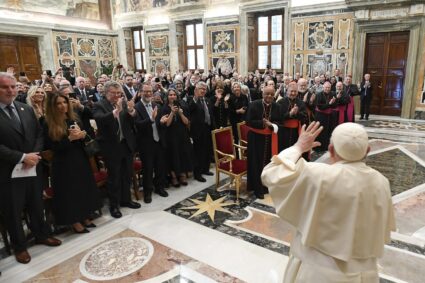
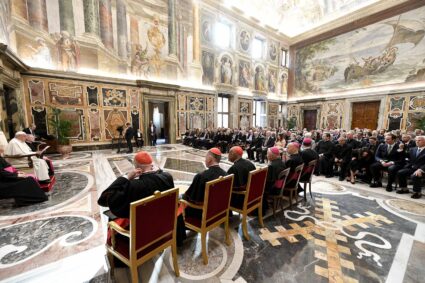
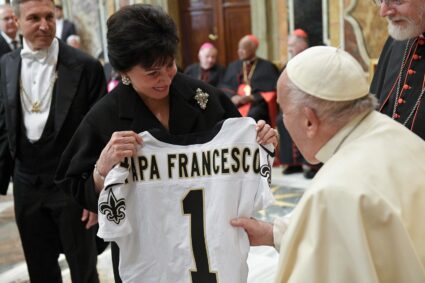
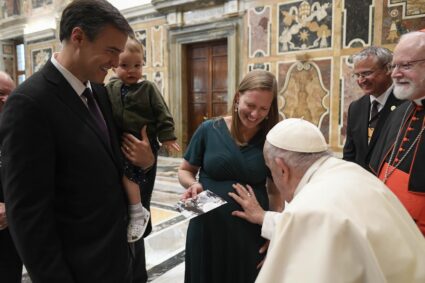
He was very animated and gave a lovely talk, which I’d like to share with you here:
Your Eminences,
Your Excellencies,
Dear brothers and sisters, good morning to everyone!I am pleased to greet all of you, the Members, Trustees, and Stewards of The Papal Foundation on the occasion of your annual pilgrimage to Rome. During this Easter season, we celebrate the Lord’s resurrection and his triumph over sin and death. Indeed, the stone in front of the tomb has been rolled back, and we are invited to look up at Jesus and welcome him into our lives, and once again say “yes” to him (cf. Homily for the Easter Vigil 30 March 2024). In this way, the abiding presence of the Risen Christ will always be a source of joy that no one can take from us (cf. Jn 16:22).
Since its inception, the Foundation has been a vessel of this Easter joy by bringing the closeness, compassion and tender love of Jesus to countless brothers and sisters throughout the world. Your support of various educational, charitable, and apostolic projects enhances the integral development of so many, including the poor, refugees, migrants, and nowadays the increasingly large numbers of those affected by war and violence. At the same time, the scholarships provided to laity, consecrated religious, seminarians and priests from developing nations enable them to pursue studies at Pontifical universities in Rome, at the heart of the Church, and equip their recipients to bear witness to the Gospel more effectively both in their home countries and beyond.
Through these various worthy initiatives, you continue to help the Successors of Peter to build up many local churches and care for large numbers of the less fortunate, thus fulfilling the mandates entrusted to the Apostle by our Lord (cf. Lk 22:32, Jn 21:17). For all of your generosity, thank you very much.
As you well know, your work finds its ultimate source and inspiration in our Catholic faith, which must be continually nourished by participation in the life of the Church, the reception of the sacraments, and time spent quietly before the Lord in prayer and adoration. Let us not forget to adore the Lord. We have neglected this form of prayer and we need to take it up again: adoring the Lord in silence. In this regard, your visit occurs in the midst of the Year of Prayer as the Church is preparing to celebrate the Jubilee of 2025. Through our perseverance in prayer, we gradually become “a single ‘heart and soul’ (cf. Acts 4:32)” with both Jesus and others, “which then translates into solidarity and the sharing of our daily bread” (cf. Letter to Archbishop Rino Fisichella for the Jubilee 2025, 11 February 2022). This fruit of our spiritual lives is important for your noble efforts, for although you may never meet them personally, the programs of The Papal Foundation foster a spiritual and fraternal bond with people from many different cultures, languages, and regions who receive assistance. Your service is all the more necessary in our time, marked as it is by a growing culture of indifference and individualism.
I offer my cordial best wishes as you visit the See of Peter, and I ask you to please pray for me. In entrusting you and your families to the intercession of Mary, Mother of the Church, I impart my Blessing as a pledge of joy and strength in the Risen Lord. Thank you!
Since its inception, The Papal Foundation has given about $350 million for causes to help the Holy Father’s charities around the world and provided 2,000 scholarships for priests and religious from developing countries to study in Rome. Of course, they also help in places like Ukraine and areas where there have been natural disasters.
The Papal Foundation is a significant source of economic support for the charitable works of the Holy See, and I’m honored to serve as its chairman.
On Friday evening, I celebrated Mass for the members of the Foundation at the Basilica of St. John Lateran. Afterward, there was a banquet in what was the palace, which is now a museum.
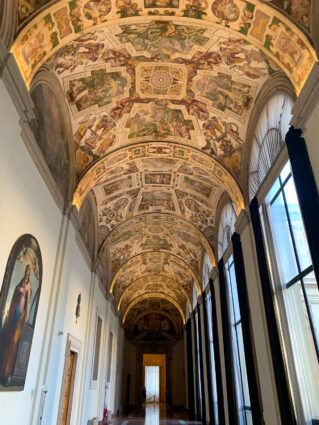


St. John Lateran is the cathedral church of Rome, and popes used to live in that palace until the Middle Ages. In fact, that’s where St. Francis of Assisi came to get the approbation for his rule and his way of life.
On Monday and Tuesday, we had our meetings of the C9 Council of Cardinals advising the Holy Father. As in our previous meetings, we had discussions on the role of women in the Church. This time, we were joined by Sister Regina da Costa Pedro and Professor Stella Morra, who shared their perspectives with us.
We also received a report on the Synod on Synodality from Cardinal Mario Grech and Msgr. Piero Coda and had a time for reflection and prayer for the troubling scenarios of war and conflict, particularly in the Middle East and Ukraine.
I was out walking on Monday, and since I knew they had done some renovations in the Church of Santa Maria Sopre Minerva, I stopped by to see it.

While in Rome, I was very happy to see Fathers Kevin Leaver and John MacInnis. They had planned to go on a pilgrimage with a group to Rome and the Holy Land, but when everything fell through, they decided to come to Rome anyway. So, I was happy to be able to see them and spend some time with them.
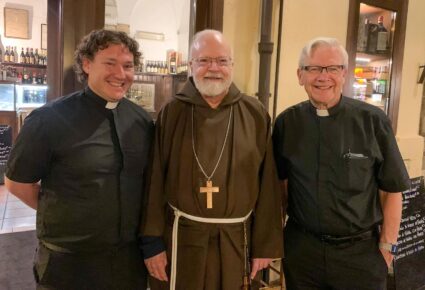
It was also very good to see the Casco family from Honduras. The whole family was there on a sort of pilgrimage. They were going to Rome and then on to San Giovanni Rotondo to visit the tomb of Padre Pio.
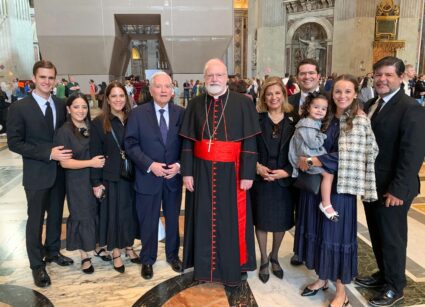
This was the family that I worked with to change the abortion laws in Honduras. Later, they were part of the Pontifical Council on the Family.
Leonardo and Marta Lorena Casco were parishioners of mine in Washington and would always go to the March for Life with me. Eventually, they went back to their country, and years later, when laws were passed allowing abortion in Honduras, they called me. I took Dr. Bernard Nathanson there to speak with the medical establishment and legislators, and we presented the film Silent Scream on television.
The laws were changed, in great part due to this family.
From Rome, I went to Salamanca to receive an honorary doctorate from the Pontifical University here.
I arrived Thursday and spent the night with the Capuchins. They gave me a tour of the city, which is one of the more ancient and historic cities in Spain.
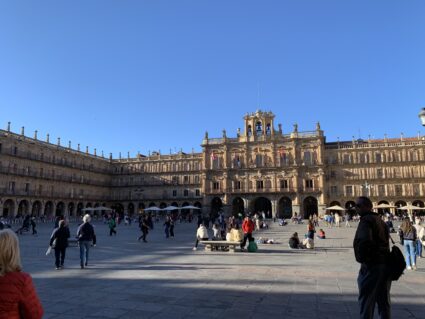
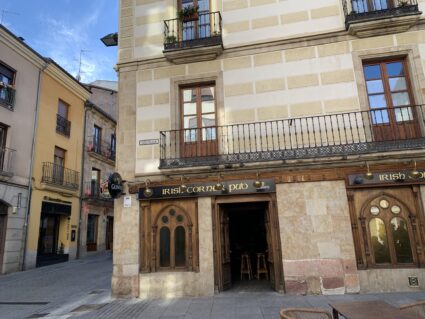
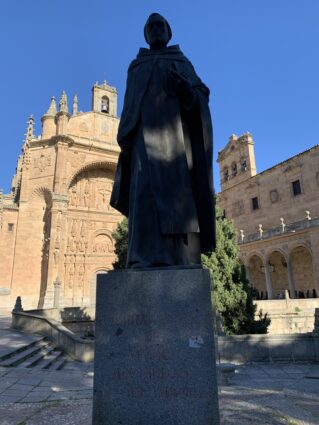
They have two cathedrals – a newer Gothic one and an older Romanesque one.
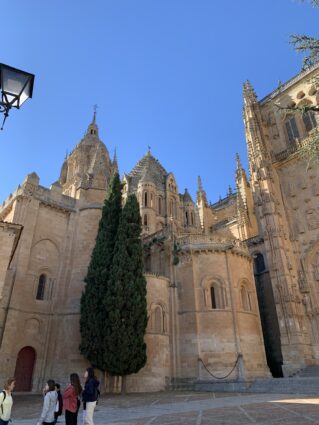
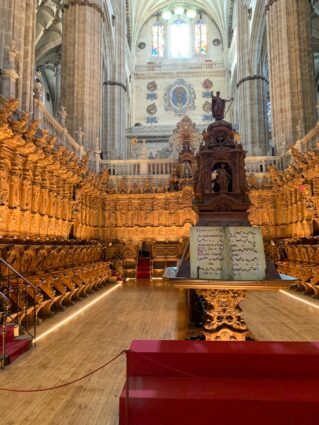


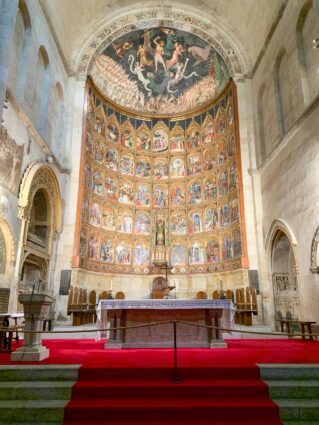
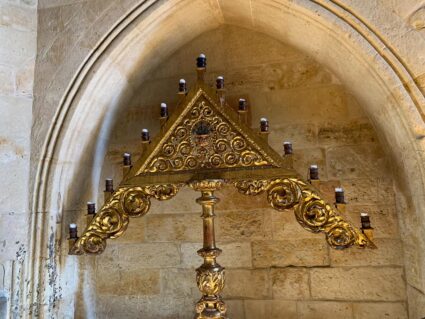
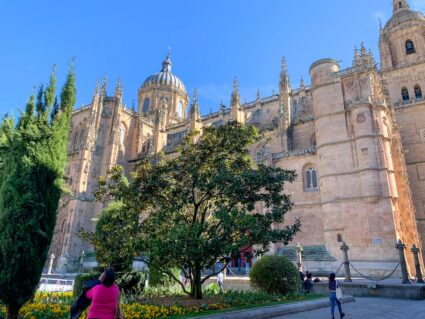
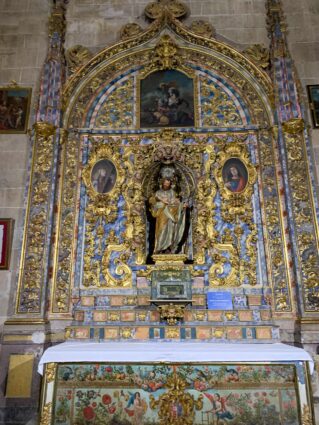
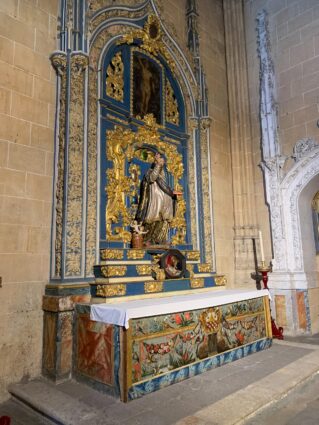
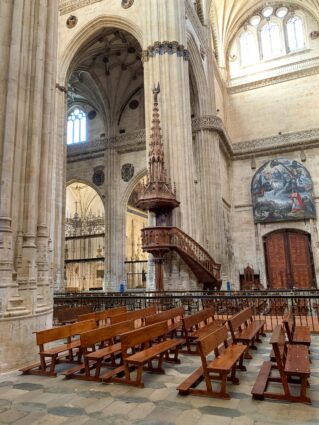
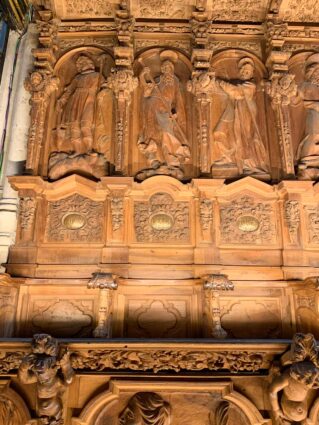

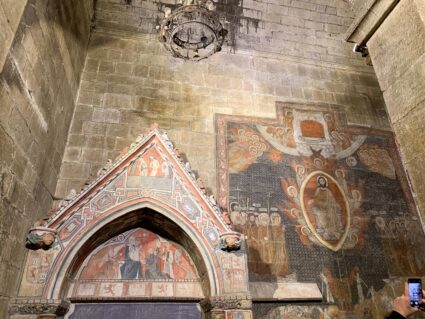

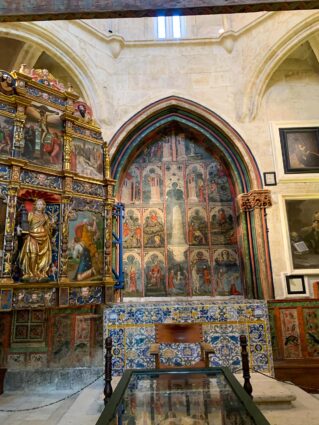
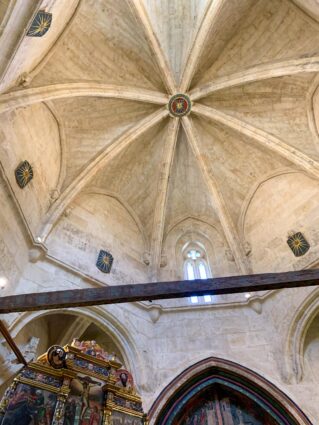
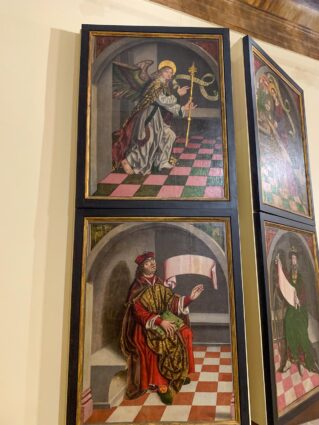

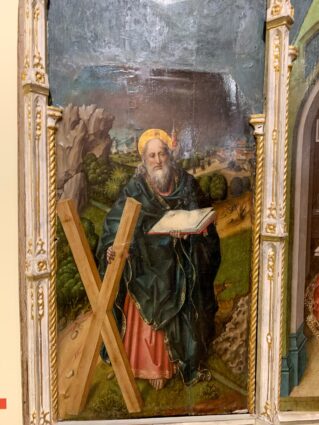
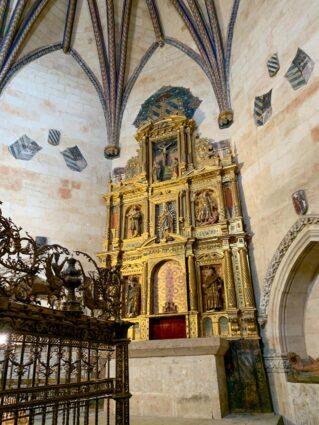
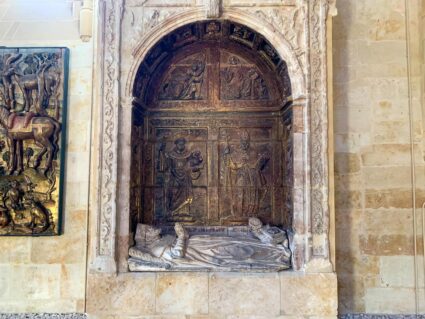
Part of the Capuchin monastery where I am staying dates back to the time of St. Francis. One of his first followers came to Salamanca, and the Franciscans established a monastery and were involved in the university here.
We also visited the Dominican Convent of St. Stephen where Christopher Columbus met with the friars before he came to the New World. The friars were very active in defending the rights of the indigenous people.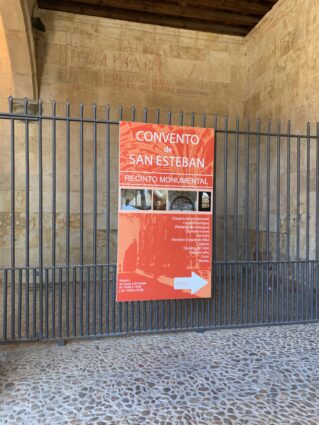
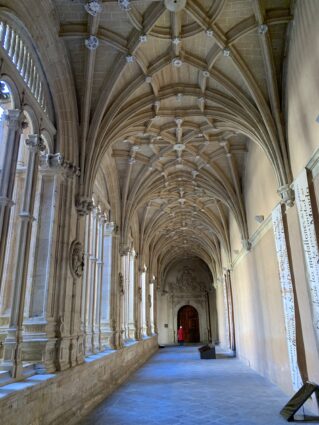
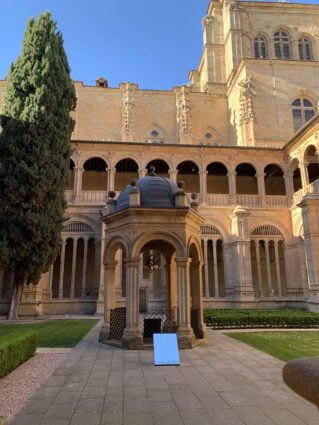
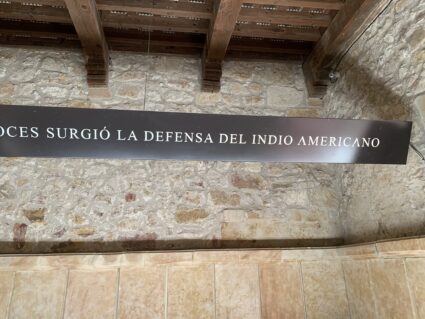
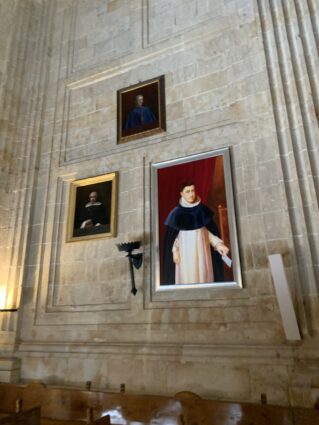
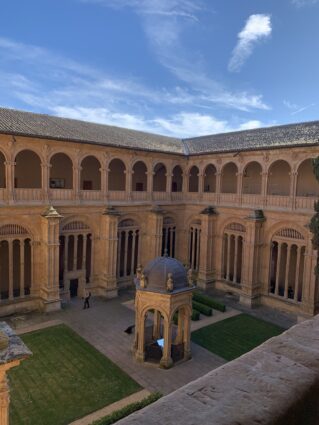
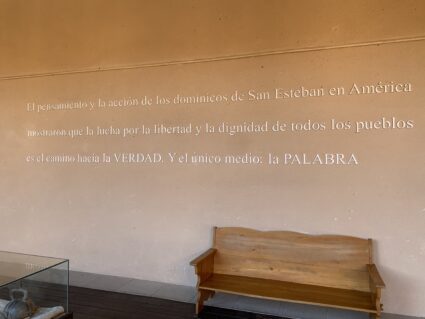
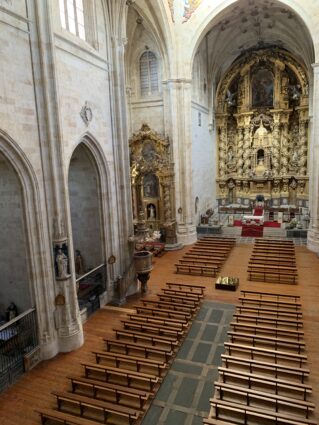
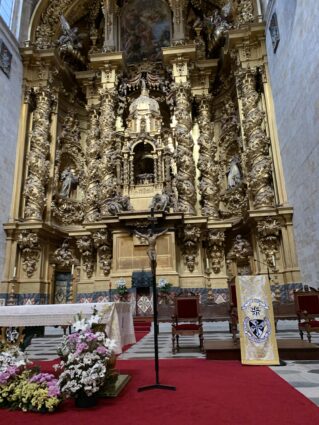
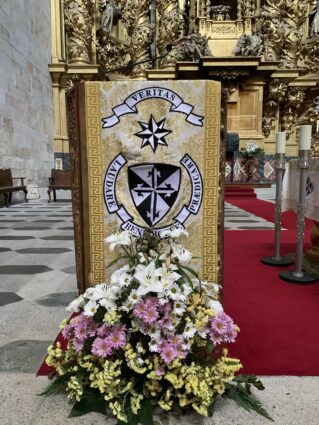

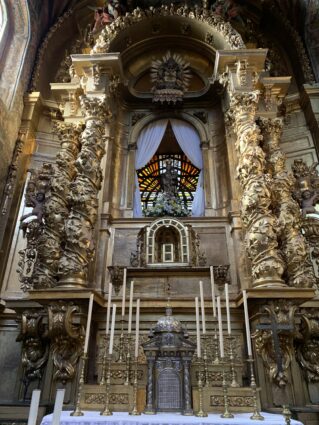
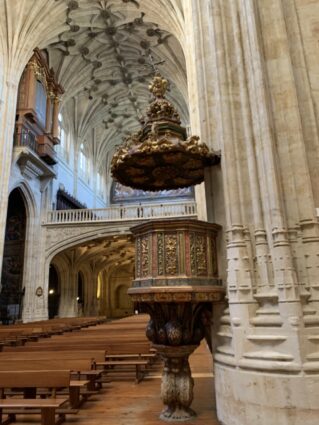
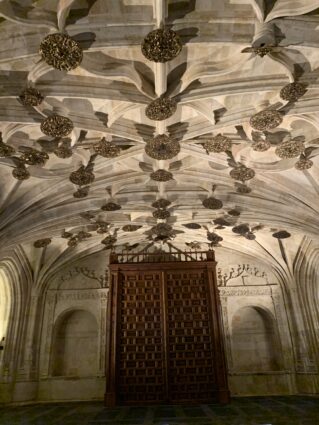
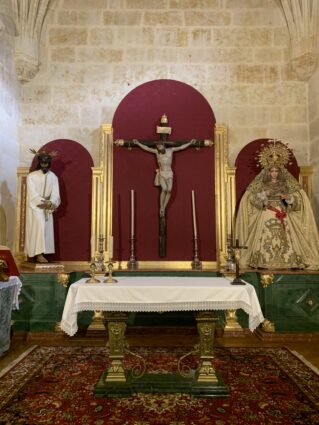
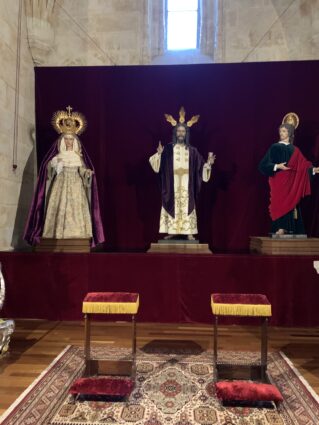
During her time in Salamanca, St. Teresa of Avil would visit the monastery to pray and seek guidance from her Dominican confessors.
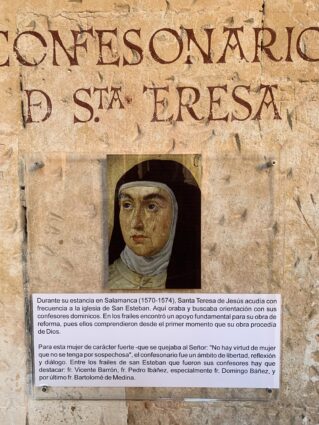
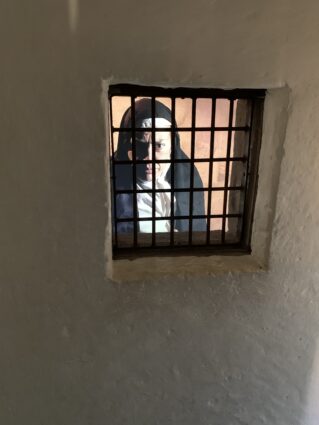
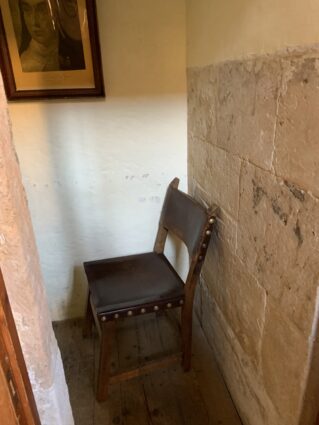
Until next week,
Cardinal Seán
